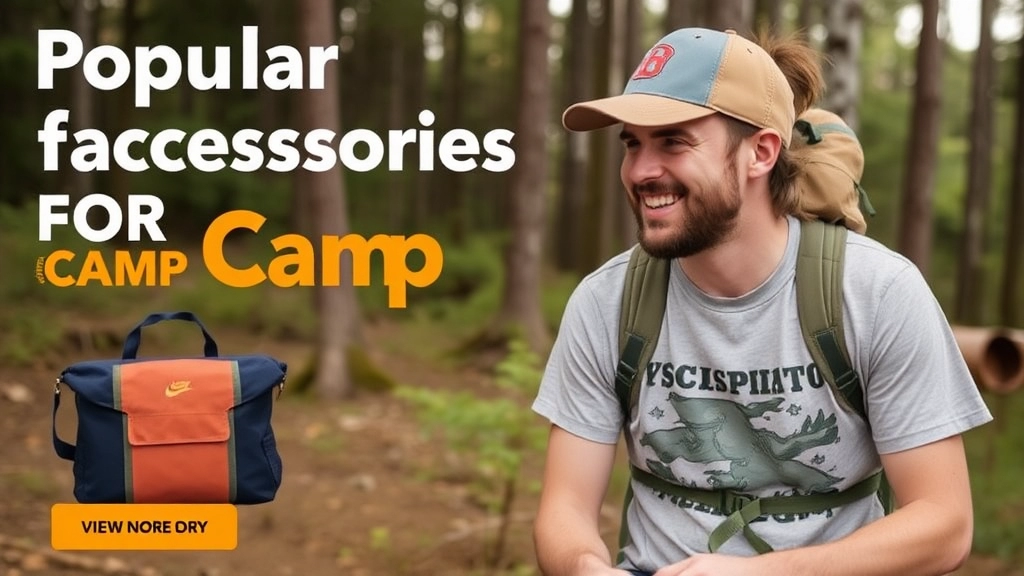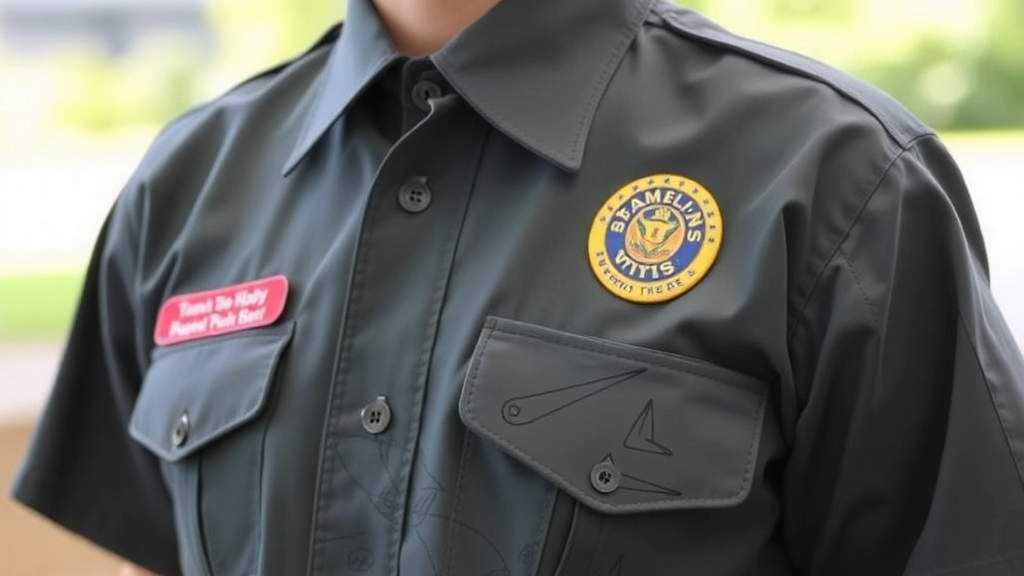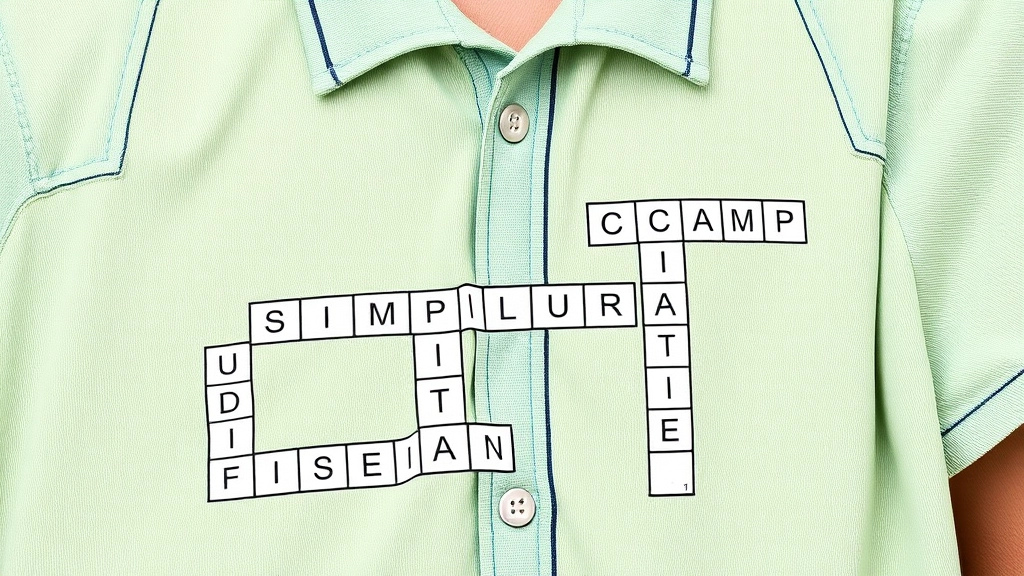Summer Camp Uniform Guide
As the summer sun beckons, the excitement of camp life comes alive, and with it, the need for the perfect summer camp uniform. From breathable fabrics to essential accessories, dressing for camp is about comfort, durability, and a touch of personal flair. In this guide, I’ll walk you through everything you need to know to make your camp attire both practical and uniquely yours.
Common Elements of a Summer Camp Uniform
We’ll explore the common elements that make up a summer camp uniform, delve into the world of accessories, and consider practical footwear options. Plus, I’ll share tips on choosing durable clothing, adapting to seasonal changes, and adding personal touches to your gear. Whether you’re a first-time camper or a seasoned pro, these insights will ensure you’re well-prepared for every adventure camp throws your way.
Common Elements of a Summer Camp Uniform
Alright, let’s dive right in. Summer camp uniformsâwhat’s the deal? You’re probably wondering, âDo I really need one?â or âWhat should I look for in a good camp uniform?â Trust me, I’ve been there. You don’t want to be the one who forgot something essential. So, here’s the lowdown on what makes a solid summer camp uniform.
Why a Uniform?
First off, why even bother with a uniform? Well, it’s simple. Uniforms make life easier. No more stressing over what to wear each day. Plus, it promotes a sense of unity and equality among campers. Everyone’s on the same playing field, and that’s pretty cool, right?
Key Elements
Here’s what you’ll typically find in a summer camp uniform:
T-Shirts and Shorts:
- Lightweight and Breathable: Think cotton or moisture-wicking fabrics. You’ll thank me when you’re not drenched in sweat.
- Durable: Camp activities can be rough. You need clothes that can take a beating.
Hats:
- Sun Protection: A wide-brimmed hat or a baseball cap can save you from nasty sunburns.
- Comfortable Fit: You don’t want it flying off during a game of capture the flag.
Footwear:
- Sturdy Trainers or Hiking Boots: Depending on the camp activities, you’ll need something that can handle trails and sports.
- Waterproof Options: If there’s a chance you’ll be near water, consider waterproof shoes or sandals.
Jackets and Hoodies:
- Lightweight Jacket: Even summer nights can get chilly. A light, packable jacket is a must.
- Hoodie: For those cooler evenings around the campfire.
Swimwear:
- Quick-Dry: You don’t want to be sitting around in wet swimwear. Quick-dry materials are a lifesaver.
- Comfortable Fit: Make sure it’s something you can move in easily.
Socks and Underwear:
- Moisture-Wicking: Keep those feet dry to avoid blisters.
- Plenty of Extras: You’ll be surprised how many pairs you’ll go through.
Real Talk
Remember that time I forgot my hat? Yeah, I ended up with a sunburn that looked like a tomato. Don’t be me. Pack smart. The key is to think ahead and prepare for all kinds of weather and activities. Trust me, you’ll be grateful when you’re comfortable and ready for anything camp throws at you. For more tips on what to bring, check out our guide on summer camp outfits.
Popular Accessories for Camp Attire

Ever wondered what accessories you need to rock your camp attire?
Let’s dive into it.
Accessories can make or break your camp experience.
You want to be prepared but not overpacked.
So, what are the essentials?
Hats and Caps
Why?
- Sun Protection: Keeps those harsh rays off your face.
- Bug Defense: Some hats come with nets to keep bugs away.
- Style: Adds a bit of flair to your uniform.
Sunglasses
Must-have for a few reasons:
- UV Protection: Your eyes will thank you.
- Comfort: Reduces glare, especially useful near water.
- Cool Factor: Let’s be honest, they look pretty cool.
Wristbands and Watches
Wristbands and watches are more than just accessories.
They are practical:
- Time Management: Keep track of activities.
- ID Bands: Some camps require them for safety.
- Fitness Tracking: Handy if you’re into that.
Water Bottles and Hydration Packs
Hydration is key.
Options:
- Reusable Water Bottles: Eco-friendly and essential.
- Hydration Packs: Great for hikes and long activities.
Backpacks and Daypacks
You need something to carry all your stuff.
Why backpacks?
- Storage: Fits all your essentials.
- Comfort: Look for padded straps.
- Durability: Go for water-resistant materials.
Bandanas and Neck Gaiters
These are versatile.
Uses:
- Sun Protection: Cover your neck.
- Face Mask: Handy in dusty conditions.
- Style: Adds a pop of colour.
Bug Repellent Accessories
Don’t forget bug repellent.
Options:
- Repellent Bands: Easy to wear.
- Clip-ons: Attach to your clothes.
Torch and Headlamps
For those late-night adventures.
Why?
- Visibility: Essential for safety.
- Convenience: Hands-free options are best.
Stories from Camp
I remember my first camp.
I forgot my hat and sunglasses.
Big mistake.
Spent the whole week squinting and getting sunburnt.
Learn from my mistake.
Pack these accessories.
Final Thoughts
Accessories for camp attire are not just about looking good.
They are about being prepared and comfortable.
So, grab your hats, sunglasses, and hydration packs.
Make your camp experience unforgettable.
Practical Footwear Options for Campers
Alright, let’s talk about something that seems simple but can make or break your camp experience: practical footwear options for campers. We’ve all been there, right? You pack your bag, excited for camp, only to realise halfway through a hike that your shoes are killing you. So, what’s the best way to avoid this? Let’s dive in.
Why Footwear Matters
First off, why is footwear such a big deal? Well, think about it. You’re going to be on your feet a lot: hiking, running, playing games. The wrong shoes can lead to blisters, sore feet, and even injuries. Not fun. So, what should you look for?
Key Features to Look For
When choosing footwear for camp, keep these features in mind:
- Comfort: This is non-negotiable. Look for shoes with good cushioning and support.
- Durability: Camp activities can be tough on shoes. Opt for something that can take a beating.
- Breathability: Your feet will get sweaty. Trust me, breathable materials make a world of difference.
- Traction: Slipping and sliding on wet or uneven terrain is a no-go. Shoes with good grip are essential.
Types of Footwear
Now, let’s break down the types of footwear you might consider. Each has its pros and cons, so think about what you’ll be doing most at camp.
Hiking Boots
- Pros: Excellent support and durability. Great for rugged terrain.
- Cons: Can be heavy and less breathable.
- Best For: Long hikes, rough trails.
Trail Running Shoes
- Pros: Lightweight, breathable, and good traction.
- Cons: Less ankle support than hiking boots.
- Best For: Shorter hikes, running, general activities.
Sandals
- Pros: Super breathable, easy to slip on and off.
- Cons: Limited protection, not great for rough terrain.
- Best For: Casual wear, water activities.
Water Shoes
- Pros: Quick-drying, good grip on wet surfaces.
- Cons: Not much cushioning or support.
- Best For: Canoeing, kayaking, swimming.
Real Talk: My Footwear Fiasco
Let me share a quick story. One summer, I thought I could get away with just a pair of old trainers for a week-long camp. Big mistake. By day two, I had blisters the size of golf balls. I ended up borrowing a pair of hiking boots from a friend, and it was a game-changer. Moral of the story? Invest in good footwear. It’s worth it.
Quick Tips for Choosing Footwear
- Break Them In: Never, and I mean never, bring brand new shoes to camp. Break them in at least a couple of weeks before.
- Pack Extra Socks: Wet socks are the worst. Bring extra pairs to keep your feet dry.
- Consider Insoles: If you need extra support, insoles can make a big difference.
For more tips on making your camp experience enjoyable, check out our Ultimate Packing Guide and learn how to pack efficiently. Also, don’t miss our Cabin & Bunk Safety and Design Tips to ensure a comfortable and safe stay at camp.
Seasonal Variations in Camp Uniforms

Ever wonder if your summer camp uniform should change with the seasons?
You’re not alone.
Let’s dive into the nitty-gritty of how to adapt your camp wardrobe from summer to winter.
Summer Uniform Essentials
Summer’s all about keeping cool and comfy. Here’s what you need:
- Lightweight Fabrics: Think cotton and breathable materials. Keeps you cool and dry.
- Shorts and T-Shirts: Easy to move in and perfect for hot weather.
- Sun Protection: Hats and sunglasses are a must. Don’t forget the sunscreen.
Autumn Adjustments
As temps drop, you’ll need to tweak your gear:
- Layer Up: Start with a base layer, add a fleece, and top it off with a windbreaker.
- Longer Pants: Swap those shorts for durable trousers.
- Waterproof Gear: Autumn can be wet. A good rain jacket and waterproof boots are lifesavers.
Winter Warmers
Winter camps are a different beast. Here’s how to stay warm:
- Thermal Layers: Base layers, mid-layers, and outer layers. Go for wool or synthetic materials.
- Insulated Jackets: Down or synthetic insulation will keep you toasty.
- Accessories: Hats, gloves, and scarves. Don’t skimp on these.
Spring Switch-Up
Spring weather is unpredictable. Be ready for anything:
- Versatile Layers: Think zip-off trousers and jackets with removable liners.
- Water-Resistant: Spring showers are no joke. Keep a raincoat handy.
- Breathable Yet Warm: Lightweight jumpers and long-sleeve shirts work well.
Key Takeaways
- Adaptability: Your camp uniform should change with the seasons.
- Layering: Master the art of layering for comfort and flexibility.
- Weather-Ready: Always be prepared for sudden weather changes.
Tips for Choosing Durable Camp Clothing
Ever found yourself wondering if your camp clothes will survive the summer? We’ve all been there. You need gear that can handle the heat, the dirt, and the unexpected adventures. Let’s dive into how to choose camp clothing that’s built to last.
Why Durability Matters
Durable camp clothing isn’t just a luxury; it’s a necessity. Imagine trekking through the woods and your shorts rip, or you’re halfway up a rock and your shirt snags. Not fun, right? Here’s how to avoid those mishaps:
Key Features of Durable Clothing
- Material Matters
- Cotton: Breathable but not great when wet.
- Polyester: Quick-drying and lightweight.
- Nylon: Tough and abrasion-resistant.
- Stitching and Seams
- Double-stitched seams: Essential for strength.
- Reinforced areas: Especially on elbows and knees.
- Weather Resistance
- Waterproof: Keeps you dry in sudden rain.
- UV Protection: Shields against sunburn.
Real-Life Examples
I once had a pair of shorts that survived three summers. Why? They were made from a blend of nylon and spandex, perfect for flexibility and durability. Trust me, investing in quality pays off.
Check the Label
Before buying, always check:
- Care instructions: Can it withstand repeated washes?
- Fabric composition: Look for blends that offer both comfort and toughness.
Budget vs. Quality
You might think, “Why spend more?” But here’s the deal:
- Higher initial cost often means long-term savings.
- Cheap clothes wear out faster, leading to more purchases.
Tips for Shopping
- Try before you buy: Ensure it fits well and feels comfortable.
- Read reviews: Real feedback from other campers can be invaluable.
- Look for sales: Quality doesn’t always mean breaking the bank.
Personal Experience
Last summer, I opted for a jacket that was both waterproof and breathable. It was a lifesaver during those unexpected showers. Remember, the right gear can make or break your camp experience.
For more tips on what to bring, check out our Ultimate Packing Guide. And if you’re curious about how much you should budget for camp, our Comprehensive Guide on Summer Camp Costs can help.
Personalising Your Camp Uniform

Ever felt like your camp uniform just doesn’t scream “you”?
I get it.
You want to stand out, even in a sea of matching outfits.
So, how do you make your camp gear uniquely yours?
Start with Patches and Pins
Patches and pins are a fantastic way to add some flair.
They’re easy to attach and can reflect your interests, hobbies, or even your favourite bands.
Plus, they’re a great conversation starter.
Imagine someone spotting your Harry Potter patch and striking up a chat. Instant friend!
Go Crazy with Colours
If your camp allows a bit of flexibility, why not play with colours?
Tie-dye your T-shirts or use fabric markers to create custom designs.
You’ll be the envy of your cabin, and it’s a fun activity to boot.
Mix and Match
Who says you have to stick to the standard issue?
Mix and match different pieces to create a look that’s all your own.
Pair your camp shorts with a funky hat or swap out the standard socks for something with a bit more pizzazz.
Just make sure you’re still following camp guidelines.
Add Some Wristwear
Bracelets, watches, and even friendship bands can add a personal touch without breaking any rules.
They’re small but can make a big impact.
Plus, they’re easy to swap out if you want to change things up mid-week.
Customise with Names
If you’re worried about losing your stuff, why not add your name to your gear?
Use fabric paint or iron-on letters to personalise your shirts, hats, and even your backpack.
It’s practical and stylish.
Stories from the Field
I remember my first camp experience.
I felt like just another face in the crowd until I added a few patches to my jacket.
Suddenly, people were coming up to me, asking about my interests and hobbies.
It made a world of difference.
Final Thoughts
Personalising your camp uniform doesn’t have to be complicated.
A few tweaks here and there can make all the difference.
So go ahead, make your camp gear a reflection of you.
Trust me, you’ll thank yourself later.
And hey, if you’re looking for more tips on camp attire, check out our sections on Common Elements of a Summer Camp Uniform and Popular Accessories for Camp Attire.
Essential Items for Camp Comfort and Safety
Ever wondered what you really need to stay comfy and safe at camp?
I’ve been there, done that, and got the mosquito bites to prove it.
So, let’s dive into the essential items for camp comfort and safety.
The Basics: Must-Have Gear
First things first, here’s your basic checklist:
- Sleeping Bag: Choose one that’s warm but lightweight.
- Tent: Waterproof and easy to set up.
- First Aid Kit: You never know when you’ll need it.
- Water Bottle: Stay hydrated, folks. Dehydration is no joke.
- Torch/Headlamp: Because stumbling in the dark isn’t fun.
Clothing Essentials
You don’t want to pack your entire wardrobe, but you do want to be prepared:
- Layers: Weather can be unpredictable. Pack light layers you can add or remove.
- Rain Gear: A waterproof jacket and trousers are lifesavers.
- Sturdy Footwear: Hiking boots or durable trainers. Comfort is key here.
- Hat and Sunglasses: Protect yourself from the sun.
Keeping It Safe
Safety shouldn’t be an afterthought. Here’s what you need:
- Insect Repellent: Trust me, you’ll thank me later.
- Sunscreen: Even on cloudy days, UV rays can sneak up on you.
- Whistle: Handy if you get lost or need to alert someone.
- Multi-tool: Think Swiss Army knife. It’s versatile and compact.
Comfort Items You Didn’t Think Of
It’s the little things that make a difference:
- Camping Chair: Sitting on the ground gets old fast.
- Portable Charger: Keep your phone and gadgets juiced up.
- Ear Plugs: Nature is noisy, and a good night’s sleep is priceless.
- Travel Pillow: Because your neck deserves comfort too.
Real Talk: What’s Worth the Space
You don’t want to overpack, but some items are worth their weight:
- Snacks: High-energy, non-perishable. Think nuts, dried fruit, and energy bars.
- Extra Socks: Wet feet are miserable. Pack extras.
- Hand Sanitiser: Hygiene is crucial, especially in the wild.
- Notebook and Pen: Jot down memories, or use it for practical notes.
For more tips on what to bring, check out our summer camp packing list essentials. Also, if you’re planning a group trip, don’t miss our charter bus tips for a perfect summer camp trip.
FAQs on Summer Camp Uniforms and Accessories
What are the essential accessories for a summer camp uniform?
Key accessories include hats and caps for sun protection, sunglasses for UV safety, and hydration packs to keep you refreshed. Don’t forget wristbands for time management and bug repellent accessories to keep insects at bay.
Why are hats and caps important for summer camps?
Hats and caps offer sun protection, can act as a bug defense, and add style to your camp attire. Some even come with nets to keep bugs away.
How can I personalize my camp uniform?
Personalize your uniform with patches, pins, and colorful designs. You can also mix and match different pieces and add wristwear like bracelets and watches.
What should I consider when packing for a summer camp?
Focus on essentials like lightweight fabrics, sun protection gear, and a good backpack. It’s crucial to be prepared but not overpacked for comfort and practicality.
How should I adapt my camp wardrobe for different seasons?
Adapt by layering clothing in autumn and winter, using waterproof gear in autumn, and choosing breathable yet warm options in spring. Always be prepared for sudden weather changes.
What are some practical accessories for a summer camp?
Practical accessories include reusable water bottles, backpacks for storage, and torch or headlamps for visibility during night activities.
How can I make my camp experience more comfortable?
Ensure you have the right accessories like hydration packs, comfortable backpacks, and sun protection gear. Personalizing your uniform can also enhance your comfort and enjoyment.
References
-
Hats for Sun Protection
-
Importance of UV Protection in Sunglasses
-
Benefits of Hydration Packs

